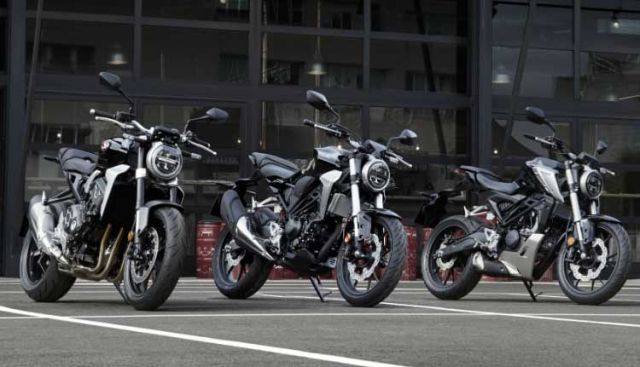
by admin | May 25, 2021 | Business, Emerging Businesses, Medium Enterprise, SMEs
 New Delhi : Honda Motorcycle & Scooter India on Friday entered into the growing middle-weight motorcycle segment with launch of CB300R.
New Delhi : Honda Motorcycle & Scooter India on Friday entered into the growing middle-weight motorcycle segment with launch of CB300R.
According to the company, CB300R is its third ‘Make in India’ model under CKD (Completely Knocked Down) line-up.
“With strategic pricing of Rs 2.41 lakh (ex-showroom, pan India), Honda has put the spotlight on the growing middleweight category and motor enthusiasts across India have responded,” Yadvinder Singh Guleria, Senior Vice President (Sales and Marketing), Honda Motorcycle and Scooter India said.
“In just 25 days since start of bookings, CB300R is already booked for over 3 months based on our current production plan…,” Guleria added.
—IANS
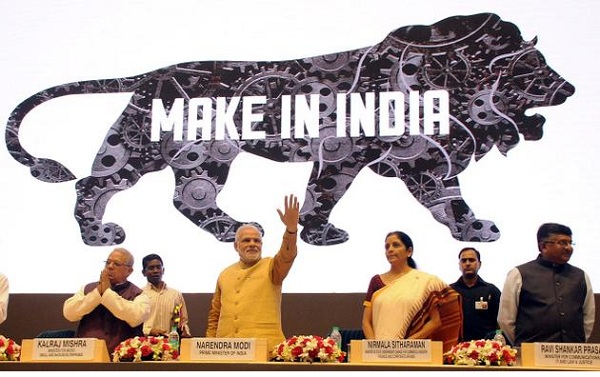
by admin | May 25, 2021 | Opinions
 By Frank F. Islam,
By Frank F. Islam,
Prime Minister Narendra Modi set out an ambitious agenda when he announced his administration’s Make in India programme in September 2014. The centerpiece of that programme is the National Manufacturing Policy, the purpose of which is to make India a global manufacturing hub. Its intent is to increase manufacturing’s share of the country’s GDP from 16 per cent to 25 per cent by 2022 and to create 100 million additional jobs by that year.
The policy sets out 11 areas of concentration, including focus sectors, easing of regulatory environments and acquisition of technology and development. It identifies 25 specific focus sectors, including automobiles, defence equipment and medical technology.
As Prime Minister Modi reported during the “Make in India week” in February 2016, progress had been made on the manufacturing agenda. Growth in manufacturing’s share of the GDP and employment since the introduction of the programme, however, has been quite sluggish.
That is why, in 2017, Parliament’s Standing Committee on Commerce issued a report questioning the impact and implementation of the Make in India initiative. The government’s Department of Industrial Policy and Promotion responded by citing a number of measures that had been taken. According to The Hindu newspaper, the committee stated that many of the measures were more than two years old and urged “the department to take effective steps to implement initiatives such as Make in India in a ‘more robust manner’…”
More recently, in mid-March, during a visit to India, American economist and Nobel Prize winner Paul Krugman called attention to the need for India to hit manufacturing with a much bigger stick. After lauding India for its significant economic growth and becoming a better place to do business, Krugman observed: “India’s lack in the manufacturing sector could work against it, as it doesn’t have the jobs essential to sustain the projected growth in demography. You have to find jobs for people.”
As a knowledgeable Indian-American business person who participated in the India-U.S. CEO Roundtable convened during President Barack Obama’s Republic Day visit in 2015, I concur completely with the need to intensify India’s manufacturing efforts. The right way to do that, in my opinion, is to create a manufacturing strategic plan for the nation and its states.
The Make in India’s National Manufacturing Policy outlines a broad range of initiatives covering a number of diffuse and diverse areas. A policy is not a plan. It is a prescription that must be targeted to achieve the desired end goals — in this instance, manufacturing being 25 per cent of the GDP and 100 million new jobs by 2022.
A well-constructed strategic plan provides the means for that targeting. It translates policy into action with a laser-beam focus. It delivers the keys to the kingdom. It identifies:
* Key Result Areas: The few areas (3-7) in which strategic action programmes must be developed and implemented effectively and efficiently.
* Key Drivers: The critical factors or sources of competitive advantage that can be leveraged for success.
* Key Partners: The top three allies who can contribute the most to achieving the plan’s goals.
The Make in India Manufacturing Strategic Plan should be crafted by an independent commission comprised of a representative cross-section of business, academic, government and other leaders with appropriate experience and expertise. The commission can draw upon the National Manufacturing Policy and multiple other studies and position papers as inputs for the plan.
My quick review of a variety of source material suggests the following as potential items for inclusion in that plan that might have great effect for simultaneously driving GDP growth and job creation:
* Key Result Area: Infrastructure Development. India’s infrastructure problems appear consistently as the most important factor that is retarding its growth potential.
* Key Driver: Automobile Manufacturing. The National Manufacturing Policy cites automobiles as an area in which India already has a competitive advantage that can be built upon.
* Key Partner: The United States. These “indispensable partners” have just begun to scratch the surface of trade arrangements and exchanges that can be mutually beneficial.
The Make in India programme is at a pivot point. The McKinsey Global Institute in an August 2016 report titled “India’s Ascent: Five Opportunities for Growth and Transformation”, observed: “India’s appeal to potential investors will be more than just its low-cost labour: manufacturers there are building competitive businesses to tap into the large and growing local market. Further reforms and public infrastructure investments could make it easier for all types of manufacturing.”
India continues its ascent, but not as quickly as intended. A Make in India Manufacturing Strategic Plan will kick on the after-burners and accelerate that ascent. Putting the right plan in place and implementing it properly should make the sky the limit for the Indian economy and the Indian people.
(Frank F. Islam is an entrepreneur, civic and thought leader, based in Washington DC. The views expressed here are personal. He can be contacted at ffislam@verizon.net )
—IANS
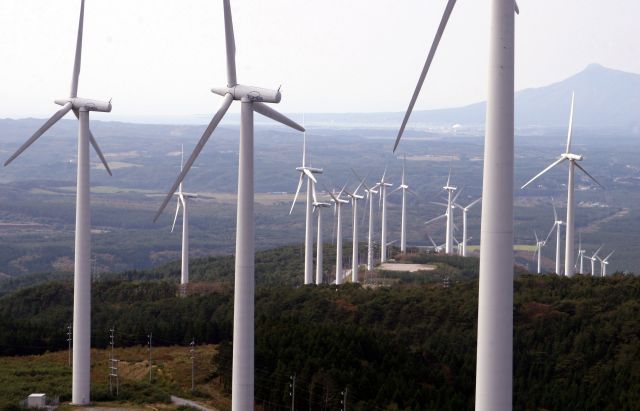
by admin | May 25, 2021 | Corporate, Corporate Governance
 Chennai : The reverse auction for determining wind power tariff should be scrapped in favour of closed/sealed bids if the Indian wind turbine manufacturers are to survive in the long run, said a top industry official.
Chennai : The reverse auction for determining wind power tariff should be scrapped in favour of closed/sealed bids if the Indian wind turbine manufacturers are to survive in the long run, said a top industry official.
He also said there should be clear policy for repowering – replacing of low powered turbines with high powered ones at the existing sites so that the increase capital cost gets reflected in the tariff.
“The Indian wind energy sector is truly an example for Make-in-India with major global wind turbine makers having a production base here.
“Around Rs 40,000 crore has been invested by the industry. It is now facing serious headwinds which if not addressed the industry may turn sick,” Ramesh Kymal, Chairman and Managing Director, Siemens Gamesa India and also the Chairman-Confederation of Indian Industry National Committee (Wind and Biomass) told IANS.
The wind power tariff touched a new level of Rs 2.64 per unit in the reverse auction conducted early this month by the Solar Energy Corporation of India (SECI) for putting up 1,000 MW capacity.
In normal auction, a product is sold to the highest bidder. In a reverse auction the sellers compete for business quoting their prices openly. The rates will gradually go down as sellers reduce their rates to get business.
On the other hand, closed or sealed bids are where companies quote their rates without revealing to others and the contract is given to the lowest bidder.
The new rate discovered is far below the Rs 3.46 per unit discovered in the auction held in February by SECI.
Till the advent of reverse auction for competitive bidding, it was the feed-in-tariff or negotiated tariff regime that existed giving the generators a comfortable price.
According to Kymal, State Electricity Boards (SEB) are not signing new power purchase agreements (PPA) and they are for renegotiation of already signed PPAs with wind power generators thereby forcing the equipment industry to stagnate.
“Like all other infrastructure projects, the bidding should be a closed one and not reverse auction done online. Why should one think closed bids are not transparent,” he said.
Kymal did not agree with the view that a bidder in a reverse auction would quote based on the project economics and a cheaper tariff would ultimately benefit the consumers.
“It may be true in theory. But in practice, it would lead to cheaper import of inefficient machines. Many of the thermal power plants with Chinese equipments are facing problems. Further cartels cannot survive for long in closed bids,” Kymal said.
Industry officials told IANS that wind power generators were able to quote low this time around as the equipment manufacturers were laden with inventory and they decided to dispose them at around 20 per cent discount.
“The inventory carrying cost was high and hence the industry players may have decided to cut their prices. But that does not mean the equipment prices too have found a new low like the power tariff,” Kymal said.
“We have scaled down our nacelle production. We started exports of blades to our sister companies in other parts of the world.
“We did not reduce our workforce as they were deployed in solar energy projects. But this situation cannot continue for long,” Kymal said about Siemens Gamesa India.
He said the Rs 2,64 per unit rate is an one-off event and eventually the tariff would settle down at around Rs 3.70 per unit.
Industry experts told IANS that if the central government is in favour of reverse auction then it should at least nudge the BJP headed and its friendly state governments to auction out projects instead of sitting tight.
Kymal said India added 5,500 MW of wind power last year and this year the fresh capacity addition will be much lower as vendors need a lead time of around seven months.
According to him repowering should be allowed with proper policy initiatives factoring the higher capital costs of new machines.
—IANS
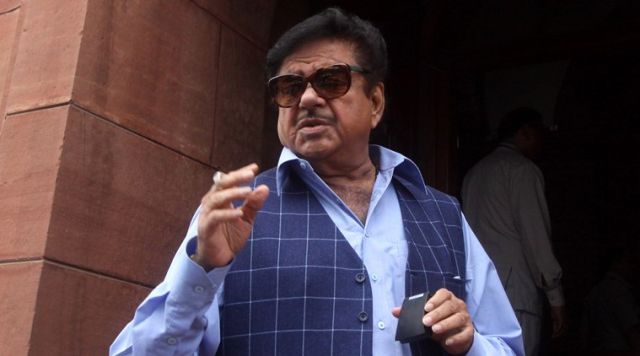
by admin | May 25, 2021 | Economy, News, Politics

Shatrughan Sinha
New Delhi : Praising Prime Minister Narendra Modi for his Make in India initiative, actor and senior BJP leader Shatrughan Sinha on Thursday said the move will help in curtailing the influx of counterfeit and smuggled products in India, which had given rise to the black economy.
He urged the stakeholders to take this agenda to the global platform and engage NRIs in the movement against illicit trade.
“It was high time and the right time for promotion, protection and projection of India’s goods and to fight against smuggling, counterfeiting and illicit trade,” Sinha said in his address at Ficci CASCADE event ‘MASCRADE’ (Movement Against Smuggling and Counterfeit Trade), adding that under the leadership of Modi and Make in India programme, this has been made possible.
According to Sinha, who is the MP from Patna Sahib, much more is needed to be done to change the general mindset with respect to the use of smuggled and illicit goods.
The Committee Against Smuggling and Counterfeiting Activities Destroying the Economy (CASCADE) said terrorist organisations are manufacturing counterfeit goods and smuggling them across borders to finance their crime operations.
“In India gold, tobacco and narcotic drugs accounts for the major smuggled goods. Also 4.2 to 5.4 million jobs to be lost globally by 2022 due to counterfeiting and piracy worldwide,” it said.
The theme of this year’s conference was “Protect Your Brand Globally: Fight Counterfeiting, Smuggling and Piracy”.
The conference was organised with the aim to ensure that national and international stakeholders can talk with policy makers to identify opportunities for joint action between governments and the private sector to combat illicit cross-border trade.
As part of the inaugural programme, Union Commerce and Industry Minister Suresh Prabhu, in a video message, said that India was moving towards becoming a knowledge economy and this meant respecting and protecting the knowledge and intellectual property of its creators.
Anil Rajput, Chairman, Ficci CASCADE, said that proceeds from illicit trade are increasingly becoming the main source of terror funding.
“We need to understand this relationship and work towards effective mechanisms to counter its worldwide impact. It’s a race against time as all of us are the stakeholders.
“The policymakers are steadily taking steps but the need of the hour is to seek bold and out of the box solutions,” said Rajput.
In an earlier report, Ficci CASCADE had said that the seizure value for mis-declaration of goods stood at Rs 1,187 crore in 2016, while that of undervaluation of goods stood at Rs 254 crore.
Several international organisations such as Interpol, United Nations Office for Drugs and Crime (UNODC), Organisation for Economic Corporation and Development, US Homeland Security and US Patents and Trademarks Office are participating in the two-day conference.
Sergey Kapinos, UNODC’s Regional Representative, South Asia, said smuggling and counterfeit goods not only hamper the economic growth of the country but also adversely affect the social fabric and the well-being of its people, and called for framing robust policies and effective implementation to curtail this menace.
Ficci CASCADE and KPMG India (knowledge partner for MASCRADE, 2017) also released a report titled- “Illicit trade: Fuelling Terror Financing and Organised Crime”, which reveals that India was the third most affected country by terrorist activities in 2016, with the first and second positions occupied by Iraq and Afghanistan respectively.
—IANS
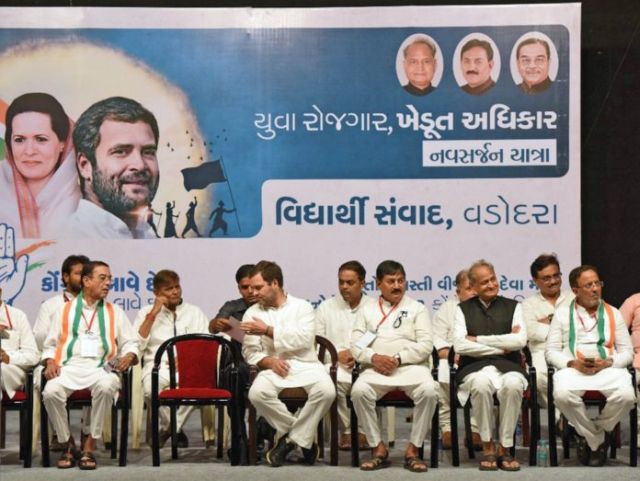
by admin | May 25, 2021 | News, Politics
 Vadodara : Congress Vice President Rahul Gandhi on Tuesday stepped up his attack on Prime Minister Narendra Modi, accusing him of remaining silent on the controversy surrounding the tremendous increase in the turnover of a company owned by BJP chief Amit Shah’s son.
Vadodara : Congress Vice President Rahul Gandhi on Tuesday stepped up his attack on Prime Minister Narendra Modi, accusing him of remaining silent on the controversy surrounding the tremendous increase in the turnover of a company owned by BJP chief Amit Shah’s son.
There has been an amazing transition from ‘beti bachao, beti padhao’ to ‘beta bachao’, he jibed at the government over its slogan of saving and educating the girl child.
The Congress leader referred to a news portal report on the 16,000-fold increase in the turnover of the company owned by Amit Shah’s son Jay Shah before the firm was shut ahead of the November 8 demonetisation last year.
Gandhi also sought to link the issue with the Modi government’s initiatives.
“Modi ji announced ‘Make in India’ and ‘Startup India’ in 2014. I do not know what came in the mind of Shah ji and how it came. It was a big innovative idea and he did his work. In three-four months, the (turnover of) Rs 50,000 became Rs 80 crore. He got unsecured loan. And a very interesting thing happened. This highly successful company was closed by (Jay) Shah ji in 2016. How the chowkidar (gatekeeper) of India is quiet. He is not speaking a word,” Rahul Gandhi said.
Gandhi, who interacted with the youth here, addressed a series of meetings as part of his campaign for the coming Gujarat assembly polls, and said the central problem of the country was unemployment.
“Prime Minister Narendra Modi came up with a slogan of “Beti bachao, beti padhao (save girl child, educate her). But here, what is happening is save the son of Amit Shah,” he said.
Rahul Gandhi also took potshots at Modi in a tweet. “Amazing transition from Beti bachao to beta bachao,” he said.
The Congress leader continued in the same vein in many of his speeches during the day and raked up the issue of Jay Shah’s business.
“There was talk of ‘Make in India’ and startups. Startup is not visible but there is an icon of all startups. It was about an eight-year-old small company with Rs 50,000 turnover. But after (BJP) coming to power in 2014, it became Rs 80 crore company. What happened that a profitable company was closed? The chowkidar should reply.”
“Is he (Modi) a ‘chowkidar’ (watchman) or ‘bhagidar’ (participant)?” Rahul Gandhi said at a meeting in the home state of both Modi and Amit Shah.
The Congress Vice President slammed the Modi government over demonetisation and the manner in which the Goods and Services Tax was rolled out on July 1.
“You hit the farmers of Gujarat, you hit small traders, medium businessmen, and from this fire one company rises and that company is of Amit Shah’s son. This is a sign of Modiji’s Startup India,” Gandhi said amid applause from the audience.
“What a Startup it is. They put Rs 50,000 and Rs 80 crore were made (turnover) in months. What a Startup India, Make in India it is. Now, only one task is left — the Startup India, Make in India has happened in one company and now they should distribute it to others. This is the thinking of the BJP, Narendra Modi,” he said.
Gandhi said that the earlier Congress-led United Progressive Alliance government’s record in generating employment was far better than that of the Modi government.
The Congress leader said there should be single-minded focus on job creation. “If our government comes to power, we will do this,” he said.
“We will bring policies after understanding your needs. We will listen to you and not impose our ‘mann ki baat’,” Rahul Gandhi said. ‘Mann ki Baat’ is Modi’s monthly address to the people through All India Radio.
Rahul Gandhi also said that people should be allowed to express themselves and even unpleasant criticism should be tolerated. “I do not believe in suppressing anyone,” he said.
—IANS

 New Delhi : Honda Motorcycle & Scooter India on Friday entered into the growing middle-weight motorcycle segment with launch of CB300R.
New Delhi : Honda Motorcycle & Scooter India on Friday entered into the growing middle-weight motorcycle segment with launch of CB300R.



